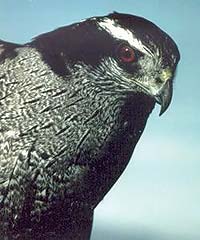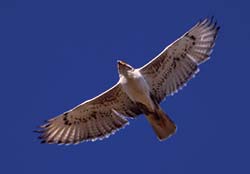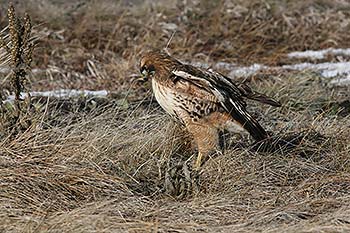 September is a great month to watch birds of prey as they slip through open desert expanses, past the towering La Sal Mountains or through the canyons of the Green and Colorado rivers. Catching a rising thermal or updraft off a ridgeline helps these birds to soar with expending much effort. They’ll need that energy for the long trek ahead.
September is a great month to watch birds of prey as they slip through open desert expanses, past the towering La Sal Mountains or through the canyons of the Green and Colorado rivers. Catching a rising thermal or updraft off a ridgeline helps these birds to soar with expending much effort. They’ll need that energy for the long trek ahead.
For some of these hawks and eagles, South or Central America represents the destination, the end of the line for their southbound journey. Others will settle down closer to home, perhaps in California, the southern US or right here in Canyon Country.
Why birds migrate is a fascinating topic. Some are in pursuit of prey, such as songbirds that also fly south where their preferred food is available – seeds, insects, or nectar from flowering plants. Others, such as the Arctic nesting rough-legged hawks, move to more hospitable areas where their preferred prey, small mammals, are active in winter. Osprey from northern latitudes, whose diet is about 99 percent fish, move to ice-free water along the coastlines or inland lakes from the southern US down to Venezuela.
A close relative of the red-tailed hawk, Swainson’s hawks are birds of open country where they dine on small mammals during the breeding season. A few Swainson hawks do nest in the Cisco Desert, utilizing small junipers in which to build their nests.
In winter, nearly the entire population of Swainson’s hawks end up in the pampas and grasslands of Argentina where they switch their summer mammal-eating diet to primarily grasshoppers and other insects. This species has probably the longest round-trip migration of members in the raptor family, roughly 12,000-15,000 and where each migration takes about two months to complete.
Peregrine falcons, whose numbers have increased due to captive breeding recovery efforts and are no longer considered endangered in the US, undergo wildly diverse winter migrations. The name peregrine means “to wander” and that is precisely what these birds do in winter depending upon their breeding location. Banded birds have the Canyonlands region have been recovered in Central America and Asia.
 In Utah, there are two famous hawk watching sites, one in the Goshute Mountains near Wendover and the other in the Wellsville Mountains near Ogden. Both sites are monitored by Hawkwatch International, a science gathering and advocacy group for birds of prey. Locally, birders head up into the La Sal Mountains to the rim of Bull Canyon or the ridgelines around Warner Lake. These elevated spots have good vantage points to scan for migrating birds.
In Utah, there are two famous hawk watching sites, one in the Goshute Mountains near Wendover and the other in the Wellsville Mountains near Ogden. Both sites are monitored by Hawkwatch International, a science gathering and advocacy group for birds of prey. Locally, birders head up into the La Sal Mountains to the rim of Bull Canyon or the ridgelines around Warner Lake. These elevated spots have good vantage points to scan for migrating birds.
Many raptors passing by the La Sals are probably Cooper’s and sharp-shinned hawks, red-tailed hawks, and American kestrels. The Coops and sharpies are accipiters, meaning they often perch then pursue prey with a quick chase. Their long tails act like rudders helping them navigate through forests or thick shrubs. In flight, they can be tricky to identify due to similarities in shape and plumage. The Coops are a little larger, have dark caps, and a little less streaking on the undersides. Plus, the Coops will chase larger prey like flickers, jays, and even squirrels.
Spending time at a hawkwatch also allows one to view the numerous plumage variations of red-tailed hawks which varied wildly and can cause some identification issues. But, that’s also the fun in participating, witnessing the migration of birds of prey that has probably occurred for thousands of years and trying to figure out which bird just went streaking by.